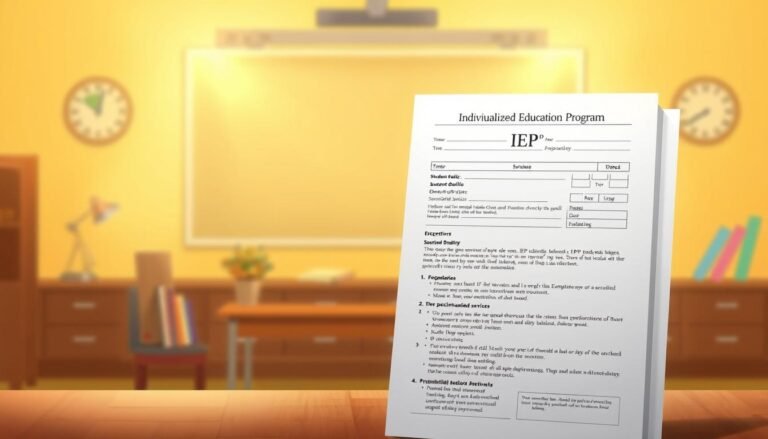
Fostering Independence: How School Accommodations Can Transform Learning for Students with Disabilities
Introduction
Imagine a classroom where every child, regardless of their abilities, is empowered to learn, grow, and thrive. This vision is not merely a distant dream but a tangible reality bolstered by effective school accommodations. Fostering independence in students with disabilities is essential for their personal and academic success. By harnessing the power of tailored support, schools can ensure that every student not only receives an education but also develops the confidence and skills necessary to navigate life beyond the classroom.
The Importance of Independence in Learning
Understanding Independence
Independence in learning refers to a student’s ability to take charge of their own education. It means mastering skills that allow them to complete tasks, think critically, and make decisions without relying solely on others. For students with disabilities, fostering independence is not merely an educational goal—it’s an essential component of their holistic development.
The Ripple Effect of Independence
When students with disabilities become more independent, the benefits extend beyond academic achievement. These positive outcomes include enhanced self-esteem, improved social skills, and a greater capacity for self-regulation. Independence allows students to set personal goals, advocate for their needs, and develop resilience, fostering a lifelong passion for learning.
School Accommodations: An Overview
What Are School Accommodations?
School accommodations are adjustments made to teaching strategies, materials, or assessments intended to support students with disabilities. These can range from simple changes, such as providing extra time on tests, to more comprehensive approaches like assistive technology or specialized instructional strategies.
Why Accommodations Matter
Effective school accommodations play a crucial role in leveling the playing field for students with disabilities, enabling them to access the same educational opportunities as their peers. The objective is not to lower standards but to ensure all students can demonstrate their knowledge and skills.
Types of Accommodations
1. Environmental Accommodations
Example: Modifying Classroom Layout
A student with mobility challenges may benefit from a classroom designed with wider aisles and accessible seating arrangements. This change fosters independence by enabling the student to navigate their environment without assistance, thus encouraging participation.
Case Study: The Accessible Classroom
Anna, a wheelchair user, faced difficulties in a traditional classroom setting where desks were tightly packed. After the school remodeled the layout, Anna gained the freedom to move independently, which significantly improved her engagement and willingness to participate in group discussions.
2. Instructional Accommodations
Example: Customized Teaching Strategies
Personalized teaching methods can empower students who struggle with conventional instructional approaches. For instance, visual aids and hands-on activities are particularly beneficial for students with learning disabilities.
Case Study: The Power of Visual Aids
Michael, a high school student with dyslexia, often fumbled through reading assignments that he couldn’t comprehend. His teacher integrated visual aids and graphic organizers into lessons. These accommodations allowed Michael to grasp complex concepts more easily, fostering his academic independence.
3. Assessment Accommodations
Example: Altered Testing Formats
Students with disabilities may require modifications to how they are assessed, such as extended time, alternative formats, or breaks during exams. These adjustments can alleviate stress and provide a fair assessment of the student’s knowledge.
Case Study: Adapted Assessments
Samantha, who has ADHD, often struggled to concentrate during timed tests. Implementing untimed assessments dramatically enhanced her performance, allowing her to demonstrate her understanding without the pressure of the clock.
4. Technological Accommodations
Example: Assistive Technology
The use of technology can transform learning experiences for students with disabilities. Tools like speech-to-text software and audiobooks can help students engage with materials more effectively.
Case Study: The Transformative Role of Technology
Liam, a student with a visual impairment, was given access to an advanced text-to-speech program. This technology fostered Liam’s independence, enabling him to complete assignments on his own and participate fully in classroom discussions.
The Role of Educators and Families
Collaboration is Key
The process of fostering independence in students with disabilities is a collaborative effort. Educators, families, and students themselves must work together to identify needs, set goals, and create strategic accommodations that empower each learner.
Empowering Educators
Training educators to understand the diverse needs of students with disabilities is crucial. Professional development helps teachers embrace inclusive practices, ensuring that they are equipped with the knowledge and resources to implement effective accommodations.
Engaging Families
Families play an invaluable role in fostering independence. By keeping open lines of communication with educators, parents can advocate for their child’s needs and reinforce strategies at home that build upon the skills learned in school.
Real-World Applications of Accommodations
Successfully Implementing Accommodations
Accommodations are most effective when they are integrated seamlessly into the educational environment. Real-world applications can demonstrate their transformative power.
Table 1: Common Accommodations and Their Impacts
| Type of Accommodation | Example | Impact on Learning |
|---|---|---|
| Environmental | Modified Classroom Layout | Increased mobility and participation |
| Instructional | Visual Aids | Enhanced comprehension |
| Assessment | Untimed Tests | Reduced anxiety and improved performance |
| Technological | Assistive Software | Greater independence in task completion |
Challenges and Misconceptions
Addressing Common Challenges
While fostering independence through accommodations can have profound positive effects, there are challenges to consider. Some educators may hesitate to implement accommodations due to misconceptions about their effectiveness or potential impact on academic rigor.
Misconceptions Debunked
Accommodations Lower Standards: Accommodations are designed to help students access the curriculum without compromising academic expectations.
Requires Additional Resources: While some accommodations may require specific tools or training, many simply involve a shift in teaching strategy or classroom setup.
- Only for Certain Disabilities: All students benefit from targeted support, not just those with identified disabilities.
Inspiring Independence in the Classroom
Strategies for Educators
Encourage Self-Advocacy: Teach students to voice their needs and preferences regarding accommodations.
Set Individual Goals: Create attainable personal goals that foster independence and encourage self-monitoring.
- Celebrate Milestones: Recognize achievements, no matter how small, to instill a sense of accomplishment and self-confidence.
Role of Peer Support
Encouraging peer mentors in the classroom can also help foster an inclusive environment. Students learning alongside peers can enhance social interactions, leading to improved engagement and mutual support.
Conclusion
Fostering independence through school accommodations is a powerful catalyst for transforming learning for students with disabilities. The journey towards independence should not be hindered by initial challenges; instead, with the right support, every student can thrive. By embracing an inclusive mindset and systematically implementing tailored accommodations, educators can create an enriching environment that empowers all learners.
Motivational Takeaway
Let us challenge ourselves to ensure that every student feels valued, capable, and equipped to seize opportunities in the world around them. Fostering independence is not merely an educational responsibility; it is a collective opportunity to build a more inclusive future.
FAQs
1. What are the most common types of school accommodations for students with disabilities?
Common types include environmental, instructional, assessment, and technological accommodations.
2. How can I advocate for my child’s needs in school?
Open dialogues with teachers and administrators, sharing specific needs, and collaborating on tailored strategies is key to effective advocacy.
3. Do accommodations impact academic rigor?
No, accommodations aim to help students access rigorous standards without lowering the expectations or content.
4. How can technology help students with disabilities?
Assistive technology can provide access to learning materials and enhance engagement, enabling more independent task completion.
5. Are accommodations a permanent solution?
Accommodations can evolve as the student progresses. Regular assessments of effectiveness will help modify strategies to best meet the student’s needs.
6. How can I ensure accommodations are implemented effectively?
Regular communication with educators, monitoring progress, and being adaptable to changes can ensure that accommodations remain effective and relevant.
In exploring Fostering Independence: How School Accommodations Can Transform Learning for Students with Disabilities, we engage with a critical topic of inclusion and empowerment. By understanding the various dimensions of accommodations and their profound impact, we open the doors to a world of opportunities for all students. Together, let’s champion independence in education!
















